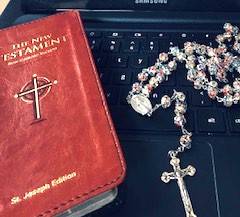 Do you ever ask yourself, “How is this different from similar pieces of writing?”
Do you ever ask yourself, “How is this different from similar pieces of writing?”
A writer is many things, but if you aren’t creative you might as well stop wasting paper. Take the time to make everything you write the best you can, and most of what you write your own. Your reader expects your writing to be something he or she hasn’t heard before.
Does that mean that you can’t write that diet book because so many diet books have already been written? No, but your diet book should have something that is new for the reader. Diet books sell by the millions because readers find something unique in each one. They can be written with a new slant, a new vision of old information, or with a surprise conclusion.
How do you make your work truly your own?
A writer is usually constrained by the publisher’s needs or word count. For example, a magazine based on travel wouldn’t appreciate an article about power tools.(unless the power tools were used to prevent a plane crash and save the day). As a writer it is up to you to be creative within the requirements of said magazine. What fresh approach can you take to visiting Rome? What is your slant or experience? Can you introduce a new sight? Or is your journey full of funny experiences?
Are you willing to take risks?
To be original and creative, a writer needs to take risks. I took a risk when I wrote The Sisters of the Last Straw. I was aware that it might be taken the wrong way. Some might think I was making fun of the Sisters who actually taught me how to write. However, it wasn’t and isn’t meant that way. I didn’t know of any books about Sisters who were overcoming all-too-human habits, especially books that included mysteries and slapstick.
Being creative and original is an opportunity to embarrass yourself or prove yourself a genius. Believe me, I have been in both situations. Have some fun — in your first draft, startle the reader with shocking leads and powerful words. Use unique metaphors and similes. Live dangerously. Oh, you’ll fix it all in your second and third drafts, but the originality will seep through. You can cut all that doesn’t work, but if you are too cautious you will never know what a great writer you are.
How do you build up your creative muscle?
Exercise your mind at least as often as you exercise your body. Or, in my case, a whole lot more. You have creativity bursting out of your subconscious. Use mind games to release your unique thoughts. Look at a photo and write a crazy story inspired by it. Pick an object, as simple as a bottle opener, and write a tale around it. Find an old story and replace every adjective and verb. This will get your creative juices flowing.
Clichés are a sign of a lazy writer. Your reader deserves better. In your spare time think of original and creative replacements for common clichés. It pays to practice releasing creativity. Here are some common word combinations. It doesn’t have to be quote-worthy but it has to be fresh. Try replacing these:
- He was tall, dark, and handsome.
- The professor was wise as an owl.
- The child was meek as a lamb.
- She was as silly as a goose.
Look at each sentence you write. What does it mean or say? Take the sentence, “She took a long walk.” Was it really a long walk? Or did it just seem like a long walk because she was tired, or afraid she was being followed, or perhaps she didn’t really want to get to her destination. See what I mean? Give your reader more than a sentence they could have read a thousand times in a million different places.
Next time, let’s talk about original description, stereotypes, and dialogue.
Copyright 2021 Karen Kelly Boyce
Karen – Excellent advice! One more note: sometimes younger writers (especially) strain to be original. This is the other side of the error of not being creative. But as you develop in your craft – when you focus on your characters, telling the story, and are sensitive to the language you use (as Karen suggests), you will find that creativity becomes a natural part of the process. You almost instinctively avoid cliches without going through gymnastic gyrations.